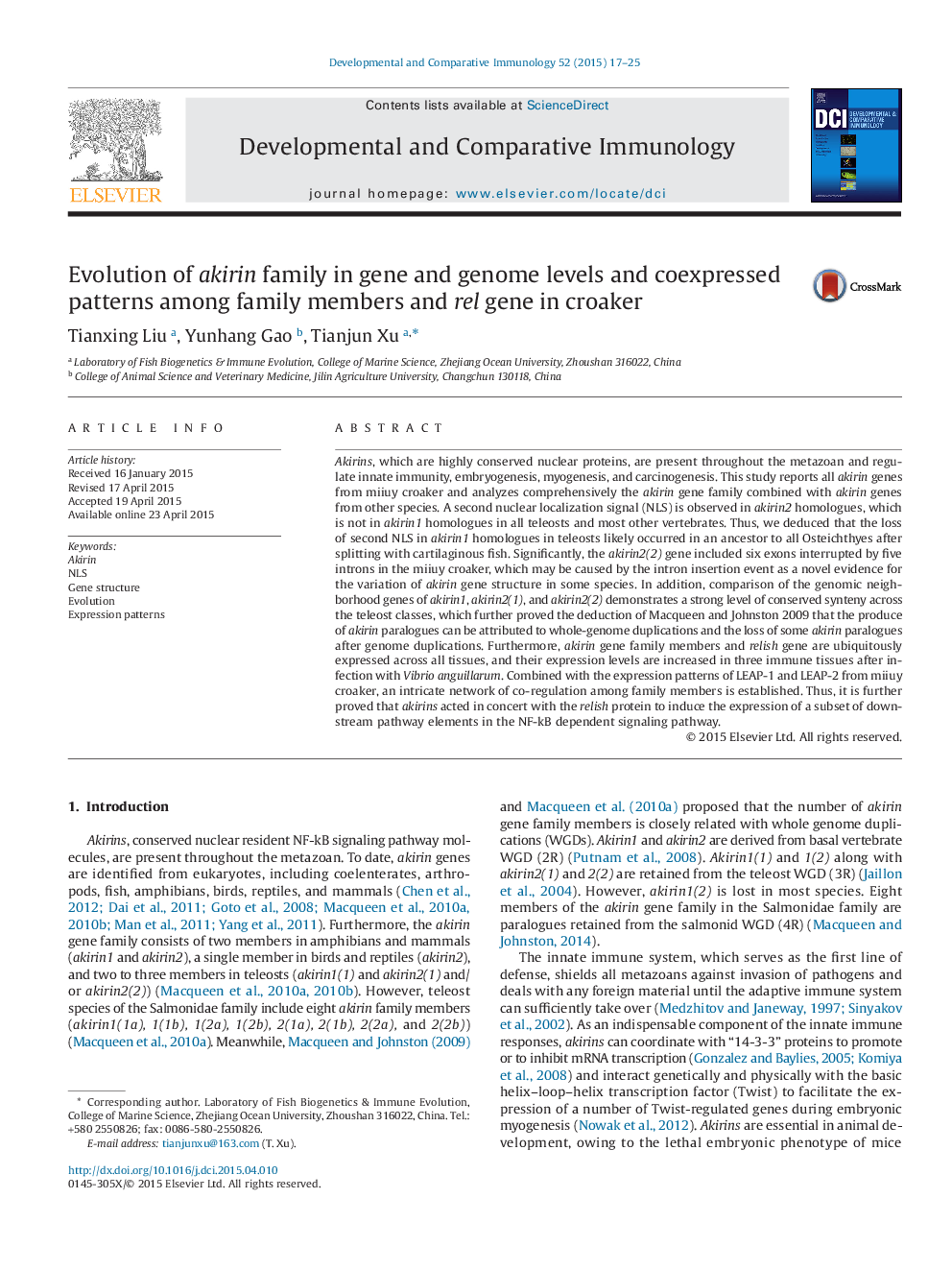| Article ID | Journal | Published Year | Pages | File Type |
|---|---|---|---|---|
| 2428947 | Developmental & Comparative Immunology | 2015 | 9 Pages |
•All akirin gene family members of miiuy croaker were identified.•There was loss of second NLS of akirin1 homologues in teleosts.•The evolution of akirin family in gene structure was analyzed.•The generation of akirin paralogues caused by three WGDs was further proved.•Co-regulation patterns among akirin and rel genes were established.
Akirins, which are highly conserved nuclear proteins, are present throughout the metazoan and regulate innate immunity, embryogenesis, myogenesis, and carcinogenesis. This study reports all akirin genes from miiuy croaker and analyzes comprehensively the akirin gene family combined with akirin genes from other species. A second nuclear localization signal (NLS) is observed in akirin2 homologues, which is not in akirin1 homologues in all teleosts and most other vertebrates. Thus, we deduced that the loss of second NLS in akirin1 homologues in teleosts likely occurred in an ancestor to all Osteichthyes after splitting with cartilaginous fish. Significantly, the akirin2(2) gene included six exons interrupted by five introns in the miiuy croaker, which may be caused by the intron insertion event as a novel evidence for the variation of akirin gene structure in some species. In addition, comparison of the genomic neighborhood genes of akirin1, akirin2(1), and akirin2(2) demonstrates a strong level of conserved synteny across the teleost classes, which further proved the deduction of Macqueen and Johnston 2009 that the produce of akirin paralogues can be attributed to whole-genome duplications and the loss of some akirin paralogues after genome duplications. Furthermore, akirin gene family members and relish gene are ubiquitously expressed across all tissues, and their expression levels are increased in three immune tissues after infection with Vibrio anguillarum. Combined with the expression patterns of LEAP-1 and LEAP-2 from miiuy croaker, an intricate network of co-regulation among family members is established. Thus, it is further proved that akirins acted in concert with the relish protein to induce the expression of a subset of downstream pathway elements in the NF-kB dependent signaling pathway.
